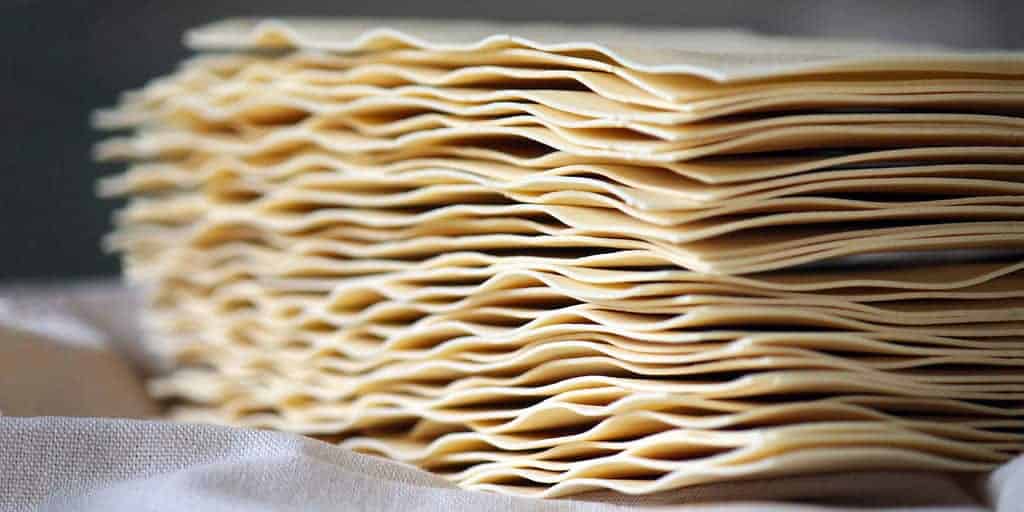
Lasagna is a classic of Italian cuisine. In this dish, the lasagna sheets cooked in hot salted water are arranged in layers separated by a filling. Perhaps because the lasagne sheets are the only constant ingredient of this dish – as there are many different types of filling – is it named after them.
Back to the past
Italian chefs recorded the recipe for this classic for the first time in a medieval cookbook, the Anonimo Meridionale. From this, one can deduce that lasagna was not initially baked in the oven. The original recipe spread within a very short period of time. Proof of this can be found in a strange report from 1370, when the Marchione di Coppo Stefani, responsible for counting the plague deaths in Florence, wrote that the dead were piled up like lasagne in the graves to explain how they had been stacked.
In southern Italy, where it is said that the recipe originates, there are dozens of recipe variations. On the other hand in northern Italy lasagne alla Bolognese is the most common. In this type of lasagna, the lasagna sheets, the ragout, the béchamel sauce and the grated Parmesan cheese alternate again and again.

If you do not want to pre-cook the dried lasagne sheets briefly in salted water, you should pay attention to the consistency of the ragout. The ragout should be more liquid in this case. This prevents the pasta from being too hard when served. Care should also be taken when adding salt. Lasagne cooked in salted water becomes salty already due to the water. In this case you should not season the ragout so much.
📖 Recipe

Lasagna: A classic of Italian cuisine
Ingredients
- 1 to 2 packs lasagne sheets, dried white or green with egg - 250 g each
- as required Parmesan cheese, Freshly grated
For the Ragú alla Bolognese
- 1 onion
- 1 carrot
- 1 stick celery
- 1 clove garlic
- 2 tablespoon olive oil
- 1 kg beef, minced
- 2 tablespoon tomato sauce, strained
- 500 ml water*
- salt
- pepper
Instructions
- Start with the preparation of the ragout. For the soffritto, place the oil in a pot together with the finely chopped onions, carrots, celery and the pressed clove of garlic and sauté over medium heat until the onions become translucent. Do not forget to stir constantly. Add the meat. Now add the salt so that it absorbs the meat well. Stir carefully and cook until it no longer looks raw and red.
- Add the tomato sauce, the water and the sliced mushrooms. Stir all the ingredients carefully. When the tomatoes start to boil, reduce the heat. Cover the sauce and simmer gently for at least two hours, stirring occasionally. Season to taste with salt and pepper
- For the béchamel sauce, melt the butter. Add grated nutmeg as desired. Add the flour and sauté briefly while stirring. The sauce must not brown. Mix the milk and water and add slowly. Bring the béchamel sauce to the boil once, then simmer at a low temperature until it thickens. The total cooking time for the béchamel sauce is about a quarter of an hour.
- Alternately layer the bottom of the casserole dish with the lasagne sheets, the ragout and the béchamel sauce and sprinkle well with the grated Parmesan cheese. Alternate these steps as long as you have ingredients. The last layer should be the Parmesan cheese.
- Put the lasagne in the oven and bake for 20 to 25 minutes, or until the top layer is golden brown. If the top layer turns dark too quickly, cover the lasagne with aluminium foil.
Notes
* If you want to pre-cook the lasagne sheets in hot water, the ragout sauce should be firmer. For this, I recommend you reduce the amount of water to 250 ml
Nutrition
Buon appetito!






Leave a Reply